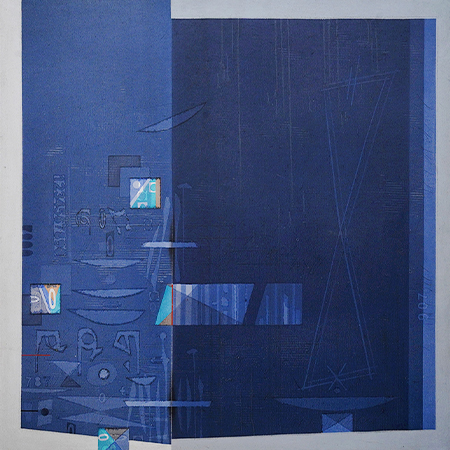Artists Profile

Anwar Khan
(B. 1964)Anwar Khan known simply as Anwar in the art world, was born in 1964 in Ambha, a small town in Madhya Pradesh. Despite not having formal training from renowned art institutions, Anwar's passion for painting led him to pursue art independently. He enrolled at Gwalior, the nearest place offering formal art education, and earned a National Diploma in Fine Arts in 1985.
His early lack of formal training did not hinder his success or the significance of his work. Anwar developed a distinctive and internationally recognized technique that set him apart from many other contemporary Indian artists, particularly in the abstract realm. He has consistently exhibited his works in solo shows from 1986 to 2003, earning acclaim for his innovative approach to abstraction.
After his time in Gwalior, Anwar moved to Bhopal, which he learned was the center of artistic activity in central India. It was here that Anwar met the eminent artist J. Swaminathan, whose mentorship would play a pivotal role in shaping Anwar's artistic evolution. Swaminathan introduced him to Sufism, which deeply influenced his philosophy and artistic vision, emphasizing light, love, and a quieter, more meditative approach to painting.
Prior to meeting Swaminathan, Anwar’s early abstract works were characterized by sharp angles and aggressive edges. However, his exposure to Sufism and Swaminathan's guidance led him to refine his approach. Anwar’s later works became softer, with a greater focus on the manipulation of color and texture. Swaminathan described Anwar's work as having the meditative quality of a waterfall or a storm at sea, suggesting a peaceful yet powerful rhythm of creation that allowed viewers to hear the "silent music" of nature.
One major turning point in Anwar's career came after the Bhopal gas tragedy, a devastating event that deeply affected him. His response to this tragedy led to a shift in his work, where he began exploring complex emotional themes such as despair, passion, and hope. His ability to express such profound feelings on canvas allowed him to move into the upper ranks of contemporary artists, having experimented with various techniques and media to develop his own unique style.
In his later works, Anwar often divides the canvas vertically, creating a central line that splits the surface into two contrasting colors. This division pulls the viewer’s attention toward the center, where all the activity on the canvas converges. Anwar grinds his own pigments to create delicate, layered pastels, which he applies using dry pastels in a calligraphic manner. He sometimes adds texture to his works by weaving or pasting painted material, creating relief-like, lyrical pieces that communicate his emotions and thoughts in a deeply personal and expressive way.
Anwar’s art, rooted in abstract traditions, has grown to be a significant voice in contemporary Indian art, with his works echoing his personal journey, his emotional responses to the world around him, and his deep philosophical engagement with Sufism.
